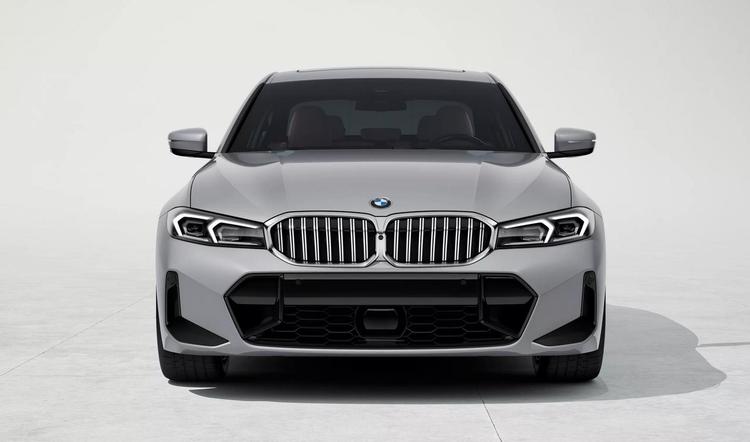BMW Recalls 330,000 Vehicles: Motor Defect Causes Fire Risk, Automotive Flame Retardant Technology to Accelerate Iteration
According to Zhuan Su Shi Jie on September 29, BMW Group will recall at least 331,000 vehicles in the United States and Germany due to the risk of short circuit and spontaneous combustion caused by water corrosion in the starter motor. The recall involves most models produced from 2015 to 2021. BMW has requested that affected vehicles be parked outdoors and away from buildings before repairs, and will replace the starter motor and battery for a "small number of vehicles" free of charge. This is another major quality crisis for BMW, following the recall of 1.5 million vehicles last year due to a brake system defect. The high repair costs have already led to a profit warning being issued.

Image source: BMW
In the field of automotive safety, the technological evolution of flame-retardant materials is becoming a critical line of defense against such risks. Currently, automotive components widely use engineering plastics such as PP, PA, PU, PC, ABS, and their modified composites. For example, a single battery pack in a new energy vehicle requires about 30kg of high-temperature resistant plastics like modified PP, PPS, or PPO, and each charging pile requires 6kg of engineering plastics such as PBT, PA, or PC. These materials need to enhance the Limiting Oxygen Index (LOI) to 25%-35% to meet flame retardant requirements, while also balancing lightweight, electrical performance, and environmental attributes.
In terms of material applications, flame-retardant PP is widely used in components such as dashboards and battery cases due to its low cost and simple processing. However, it requires halogen-free modification through the addition of phosphorus-nitrogen intumescent flame retardants (such as IFR) or long glass fiber reinforcement. For example, LGF-reinforced halogen-free flame-retardant polypropylene battery cases prepared using a dual masterbatch method can avoid performance degradation caused by glass fiber shear degradation. While flame-retardant ABS is maturely applied in the home appliance field, in the automotive industry, its flame retardancy needs to be enhanced through PC/ABS alloying. Currently, 70% of ABS used in electronic and electrical applications still utilizes brominated flame retardants, but the trend towards halogen-free alternatives is evident. Flame-retardant PC predominantly uses phosphorus-based flame retardants (such as BDP), which have good compatibility with PC and can provide both gas-phase and solid-phase flame-retardant effects. Silicon-containing compounds, due to their low toxicity and high efficiency, have become an emerging research direction.
In the field of composite materials, PC/ABS, PC/PBT alloys achieve balanced performance through blending modification. For instance, Polymaker has developed PC-FR material that meets the UL94 V0 standard, which is already used in new energy battery housings. Pret's flame-retardant PC/ABS series meets the UL94 V0 and electrical reliability requirements, making it suitable for power batteries. Additionally, Jushi Group's 568FR glass fiber inhibits the "wicking effect" through micron-level dispersion, allowing for reduced flame retardant usage. Javachem's FRSi silicone synergist can enhance flame retardant efficiency and improve processing performance.
Under the dual context of electrification and carbon neutrality, flame-retardant plastics are developing towards being halogen-free and high-performance. Future technological focuses include synergistic flame retardant compounding, intumescent flame retardants, nanotechnology, and multifunctional technologies. For example, nano-layered double hydroxides can enhance flame retardant efficiency, while high-efficiency surface chemical modification technologies can optimize the comprehensive performance of materials. These innovations not only support the demand for lightweight automotive designs but also provide key material guarantees for battery safety and the reliability of charging facilities in the new energy era.
For BMW, this recall coincides with the critical period of launching its "Neue Klasse" product line and investing over 10 billion euros. Facing strong competition from Chinese brands in the electric vehicle sector, BMW needs to find a balance between quality control and technological iteration—addressing the legacy issues of traditional power systems while achieving breakthroughs in safety and performance through material innovation in the new energy track.
【Copyright and Disclaimer】The above information is collected and organized by PlastMatch. The copyright belongs to the original author. This article is reprinted for the purpose of providing more information, and it does not imply that PlastMatch endorses the views expressed in the article or guarantees its accuracy. If there are any errors in the source attribution or if your legitimate rights have been infringed, please contact us, and we will promptly correct or remove the content. If other media, websites, or individuals use the aforementioned content, they must clearly indicate the original source and origin of the work and assume legal responsibility on their own.
Most Popular
-

Zf asia-pacific innovation day: Multiple Cutting-Edge Technologies Launch, Leading Intelligent Electric Mobility
-

Mexico officially imposes tariffs on 1,400 chinese products, with rates up to 50%
-

List Released! Mexico Announces 50% Tariff On 1,371 China Product Categories
-

Fire at Sinopec Quanzhou Petrochemical Company: 7 Injured
-

Argentina Terminates Anti-Dumping Duties on Chinese PVC Profiles! Kingfa Technology & Siemens Sign Digital and Low-Carbon Cooperation Agreement






